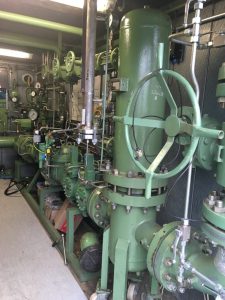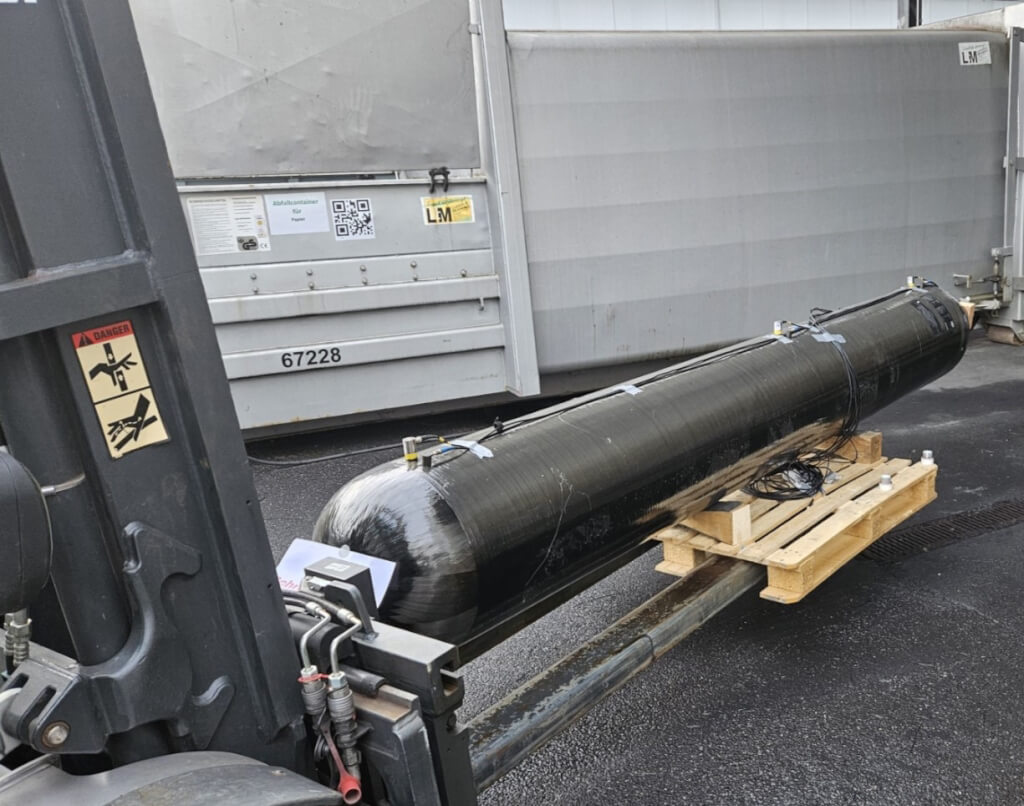In industrial systems where safety, uptime, and precision matter most, identifying damage before it escalates is critical. Regulations such as the German Ordinance on Industrial Safety and Health (BetrSichV) require proactive strategies to prevent hazardous situations. Acoustic Emission Testing offers an innovative, real-time solution for monitoring asset integrity, helping to streamline maintenance and extend inspection intervals. TÜV SÜD demonstrates how this advanced testing method can also lead to significant cost savings while supporting smooth production processes.
By Rainer Semmler, Head of Process Safety Management, Hermann Schubert, Head of Digital and Continuous Inspection, TÜV SÜD Industrie Service

As industries face increasing demands for modularity, adaptability, and continuous output, traditional inspection approaches are reaching their limits. These methods — often cyclical and invasive — cannot easily accommodate the fluctuating stress profiles modern systems endure. Acoustic Emission Testing (AT) presents a viable alternative. It is a sensor-based technique that captures acoustic signals emitted by structural changes in materials, such as crack propagation or corrosion onset.
AT sensors detect transient elastic waves that originate from subtle vibrations or displacements in structural integrity, even if they are mounted externally on equipment surfaces. Normally, a piezoelectric measuring principle is used for these sensors. Once activated, they continuously monitor the system and feed data into specialised software. This allows for both high-resolution monitoring and pinpoint localisation of anomalies, all “without” halting operations.
By avoiding shutdowns, operators maintain throughput and eliminate many risks associated with opening systems. Additionally, components are not exposed to cleaning agents, humidity, or potential contaminants. Moreover, AT can be adapted to various component geometries and materials, making it ideal for stainless steel piping systems, pressurised equipment, and integrated machines such as pumps, mixers, and compressors.
Interdisciplinary approaches and close, cross-generational communication are essential for making the digitalisation of welding processes truly effective and fully leveraging the potential for higher process stability, resource efficiency, reproducibility and traceability.
Monitoring materials and mechanisms in demanding environments

In industrial facilities that handle aggressive media, high pressures, or extreme temperatures, corrosion-resistant alloys (CRAs) — such as austenitic stainless steels, duplex grades, and nickel-based alloys — are fundamental to ensuring long-term structural integrity. These materials are chosen for their ability to withstand harsh chemicals, mechanical stress, and thermal cycling. As a result, CRAs are widely used in pressurised equipment, piping systems, and rotating equipment across sectors like chemical processing, energy, and water treatment.
However, while CRAs offer high performance, they are not immune to damage. Welds, flanges, and load-bearing zones can experience fatigue, stress corrosion cracking, or microstructural deterioration — often in ways that are difficult to detect visually. AT provides an ideal monitoring solution by capturing high-frequency signals generated by material distress. AT sensors are mounted externally on equipment surfaces and detect even subtle discontinuities or shifts in structural integrity. Additionally, inspections can be performed without disrupting operations or exposing sensitive surfaces to contaminants that could compromise the passive oxide layers critical to CRA performance. Within these same operational environments, heat exchangers present a complementary challenge. Though they may be constructed from the same corrosion-resistant materials, they function as thermal control systems used to condense vapours, recover waste heat, or cool process fluids. Exchangers are often subjected to intense thermal cycling, high flow velocities, and chemically reactive conditions. This makes them susceptible to tube cracking, joint fatigue, and erosion, especially in designs like shell-and-tube or plate exchangers, where internal access is limited.
Here, too, AT offers a significant advantage. It allows operators to monitor the structural health of exchanger units in real time, identifying subtle signs of internal failure long before they escalate into system outages or compromised thermal performance. Because AT works without dismantling the equipment, it supports a shift toward condition-based maintenance, reduces unnecessary downtime, and extends service intervals for these critical subsystems.
While CRA-based infrastructure and heat exchanger assemblies differ in function, they often operate side by side — subjected to similar environmental stressors and degradation mechanisms. AT enables both to be assessed under a single, non-invasive methodology, offering a unified approach to asset integrity in demanding process conditions.
Optimising inspection cycles
The value of Acoustic Emission Testing extends beyond fault detection. By capturing real-time operational data, AT allows engineers to build an evidence-based view of how components degrade over time. This supports condition-based maintenance, enabling inspection intervals to be shortened or extended based on actual equipment status rather than fixed cycles.
When anomalies such as sudden changes in acoustic signal patterns are detected, engineers can interpret these with intelligent, AI-supported software tools. Depending on severity and localisation, decisions are made to either repair the defect, monitor it further, or plan replacement. All actions are documented and must be reviewed with inspection institutions, such as TÜV SÜD, to ensure compliance with national and international inspection standards.
Real-world example: Cost reduction in practice
A typical polymer resin production facility can provide a compelling case for the benefits of AT.
Traditionally, such a plant conducted annual hydrostatic testing at a cost of approximately €1 million.
By transitioning to AT, the operator would achieve measurable savings across several categories.
Breakdown of annual savings:
- Avoided two-day production stoppage: EUR 160,000
- Eliminated fluid-based inspection process: EUR 200,000
- Avoided gasket and seal replacements post-inspection: EUR 25,000
- Reduced unplanned maintenance by 80%: EUR 40,000
- Enabled simultaneous testing of multiple pressure circuits: EUR 100,000
- Limited follow-up inspections to high-risk areas: EUR 50,000
- Extended lifespan of key components: EUR 10,000
Total potential savings: EUR 585,000 annually
Conservative implementation (70%): EUR 410,000 annually
The switch to AT not only cut direct inspection costs but also allowed for smarter allocation of maintenance resources. Labour and material use were reduced, and the asset health insights gained from AT enabled better long-term investment planning.

Enhancing integration and reducing strain
One of the strongest features of AT is its compatibility with other non-destructive testing methods. It can complement radiographic or ultrasonic inspections and, because of its live-monitoring capability, guide the timing and scope of these supplementary methods. Rather than inspecting every weld or tube, operators can use AT data to focus on areas showing acoustic anomalies — saving time and inspection effort. Moreover, AT can be performed using the present fluid, eliminating the need for drying processes and preventing issues like residual moisture-induced corrosion and contamination.
Conclusion
Acoustic Emission Testing represents a pivotal advancement in industrial inspection. By combining real-time data collection with non-invasive procedures, it delivers a holistic view of equipment health while reducing costs and downtime. Its application is particularly beneficial in stainless steel and heat exchanger systems, where early damage detection, protective layer preservation, and inspection flexibility are essential. With proven success in operational environments and compliance with regulatory frameworks, AT offers a practical path forward for industries seeking more efficient ways to manage asset integrity.
About the authors

Rainer Semmler is the Head of Process Safety Management at TÜV SÜD Industrie Service, a branch of TÜV SÜD specialised in the inspection and testing of plants, infrastructure facilities and buildings. With a degree in process engineering, Semmler has worked in the process industry since 1991 and was declared an expert according to Section 29 a/b of the German Federal Immission Control Act in 1998. He has been with TÜV SÜD since 2011.

Hermann Schubert is Head of Digital and Continuous Inspection at TÜV SÜD Industrie Service. With a degree in metallurgical engineering, Schubert specialised in damage mechanisms and advanced non-destructive testing (NDT). Certified Level 3 in Acoustic Emission and Ultrasonic Testing, Schubert has been instrumental in developing smart inspection solutions and asset health monitoring strategies. He joined TÜV SÜD in 2020.
About this Tech Article
Appearing in the August 2025 issue of Stainless Steel World Magazine, this technical article is just one of many insightful articles we publish. Subscribe today to receive 10 issues a year, available monthly in print and digital formats. – SUBSCRIPTIONS TO OUR DIGITAL VERSION ARE NOW FREE.
Every week we share a new technical articles with our Stainless Steel community. Join us and let’s share your technical articles on Stainless Steel World online and in print.


